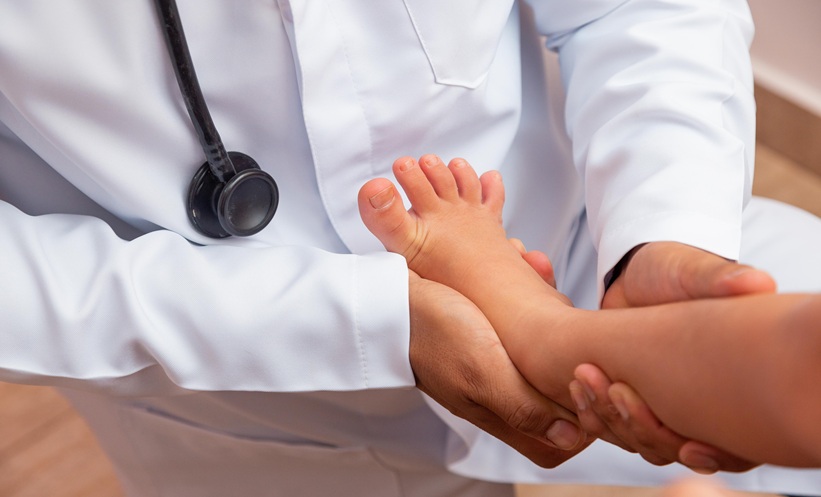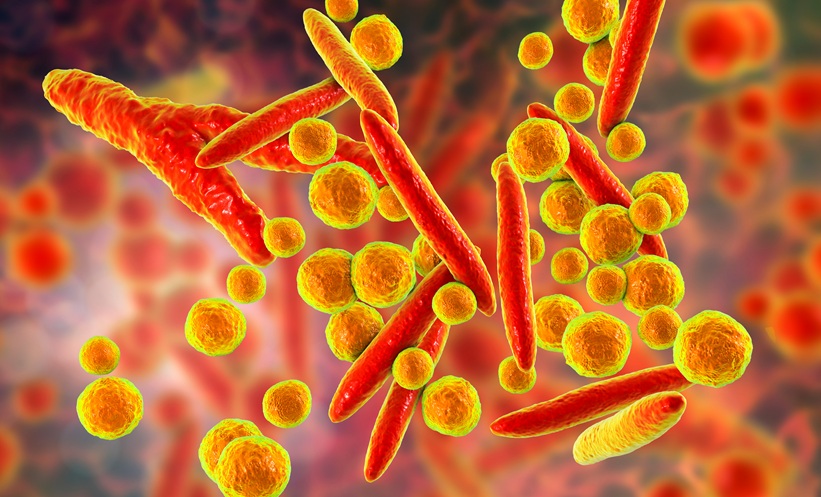Robin Stannard | Editorial Assistant
![]()
As expected, debate and expert discussion at the 32nd European Congress of Clinical Microbiology and Infectious Disease (ECCMID) in April 2022 was set to the backdrop of COVID-19, focusing on the lessons learnt throughout the pandemic and looking to mitigating risks of future pandemics. In a session on the third day of ECCMID 2022, specialists took a holistic view, presenting evidence and testimony on past pandemics alongside a look to the future, emphasising the value of pandemic preparedness and first-line defences. Nicholas Grassly, Vaccine Epidemiology Research Group (VERG), Department of Infectious Disease Epidemiology, Imperial College London, UK, drew parallels between the polio pandemic of the past and COVID-19 in regard to the impact on populations and response of the scientific community. Nicola Petrosillo, National Institute for Infectious Diseases (INMI) Lazzaro Spallanzani, Rome, Italy, discussed the impact of COVID-19 on influenza prevalence, highlighting challenges arising from co-infections with two increasingly endemic viruses.
THE FUTURE AND PAST OF VIRAL POLIOMYELITIS
Grassly opened his presentation by providing a historical overview of the poliovirus. The virus, which evolved thousands of years ago, was endemic within the population. However, improving sanitation and hygiene were helping its gradual disappearance. However, large epidemics grew in the late 1940s and early 1950s to near pandemic levels. Drawing parallels with the COVID-19 pandemic, Grassly showed images of hospitals filled with children attached to iron lungs, the mechanical ventilation method of the time. Further salient parallels between COVID-19 and polio were noted, with Grassly highlighting the scope and level of response from the scientific community to polio. The largest placebo-controlled double-blind trial conducted in an open population at that time investigated passive immunisation using γ-globulin in approximately 50,000 children in 1952. This resulted in an immense public response, with parents bringing their children to clinics repeatedly to ensure their child was on the active agent and not the placebo, speaking to the atmosphere of anxiety and panic.
Jonas Salk and his team, Grassly continued, were the first to develop an effective vaccine based on the chemical inactivation of wild-type polioviruses, known as the inactivated polio vaccine. Viral poliomyelitis only has three poliovirus serotypes as it does not mutate and produce variants, which has been seen with severe acute respiratory syndrome coronavirus 2 (SARS-CoV-2). This meant that inactivation of the three serotypes provided a viable vaccine strategy. This was followed by further innovation with Albert Sabin’s live attenuated oral polio vaccine (OPV), which was approved in 1963. The intestinal mucosal response paired with the systemic response and seroconversion the OPV resulted in increased viral replication and a stronger immune response. The efficacy and ease of administration of the OPV saw a global rollout, with a huge positive impact on case burden and deaths in the late 1950s. However, the efficacy of seroconversion in the gut caused by OPV was inhibited in children from low-income countries, which created ongoing challenges for the polio eradication programme.
The success of the polio vaccine programmes led to the 1998 World Health Assembly (WHA) committing the World Health Organization (WHO) to the goal of global eradication of poliomyelitis by 2000. The programme has seen significant victories. The last cases of wild-type poliovirus serotypes 2 and 3 were seen in 1999 and 2012, respectively. However, wild-type 1 persists and, since 2014, the risk of international spread of poliovirus has been considered a public health emergency of international concern. Currently, the programme costs approximately 1 billion USD a year and encompasses the collaboration of multiple non-governmental organisations. Despite the huge decrease in polio distribution, the disease remains in parts of the world where vaccine programmes face continuous challenges. At the end of 2021, wild-type polio was only present in Pakistan and Afghanistan, where five cases were reported. Grassly highlighted that each case of polio virus represents many infections as the rate of paralysis to infections is one in 700.
Despite being enormously successful with the polio vaccines initially, there is still viral persistence within populations. Attenuated viruses from the OPV, replicating within mucosal surfaces in the gut, can precipitate genetic diversity and mutation at attenuation sites. In most cases, the subsequent immune response overwhelms and destroys the mutated virus; however, vaccine-derived polioviruses can, rarely, survive with transmissibility and virulence, leading to circulating vaccine-derived polio outbreaks. This novel threat led to countries switching from trivalent to bivalent OPVs, with a push from governing bodies to include at least one dose of inactivated polio vaccine in vaccination programmes in a concerted effort to avoid OPV-generated viral mutation. However, outbreaks occurred, centring in Nigeria and Somalia from 2016 to 2019. Furthermore, the subsequent reduction in global immunity following the withdrawal of OPV has resulted in the spread of vaccine-derived polio virus infections.
Further innovation in polio vaccine technology has focused on more stable oral vaccines, following a better understanding of the genetic bases of attenuation. Novel serotype 2 OPV was developed with additional stabilisation of mutations in the 5′ untranslated region. Phase I and II trials demonstrated safety and immunogenicity resulting in the novel serotype 2 OPV vaccine, becoming the first ever vaccine to be expedited through the WHO emergency use listing. This is the same type of emergency use listing that we have seen applied to numerous COVID-19 vaccines over the past 2 years. Over 200 million doses have since been delivered, with safety, impact, and efficacy monitoring ongoing.
In his concluding remarks, Grassly explained that at present, wild-type viruses are restricted to Afghanistan and Pakistan, with a recent spread to Malawi, where a case of paralysis occurred in 2021. Vaccine-derived viruses now constitute a much larger proportion of infections and are spread over a considerably wider area of sub-Saharan Africa and South Asia.
Contemporary research largely focuses on increasing epidemiologists’ ability to track the spread of polio. The current process of obtaining a sequenced sample result following the onset of paralysis takes approximately 6 weeks, resulting in a 6-week delay before a vaccine response can be launched in a community; however, direct detection through nested PCR and nanopore sequencing can generate a viral protein 1 sequence in 2–3 days. This research, which has been pioneered by Grassly’s team, has so far demonstrated improved cost efficiencies with non-inferior specificity when compared with current methods. Short-term implementation within the Democratic Republic of Congo detected four new outbreaks 3–5 weeks before current standard testing regimes.
The evidence presented by Grassly conveys the value of constant innovation and adequate investment in response to pandemic threats. The initial vaccine race was necessary to prevent the global prevalence of polio; however, new research on optimum vaccine programmes and efficient testing methods has been continuously required to compete in the viral arms race and mediate the pandemic threat.
INFLUENZA AND THE COVID-19 PANDEMIC
Presenting his session about the impact of COVID-19 on the spread of influenza, Petrosillo highlighted the value of preventative measures and the necessity for future pandemic preparedness. With similar initial clinical presentations to influenza, COVID-19 is associated with higher incidence of fever, shortness of breath, and diarrhoea. Laboratory results demonstrate that patients with COVID-19 tend to have lower white cell counts, with different cellular expression to patients with influenza.
Petrosillo then focused on the changes to influenza circulation that occurred throughout 2020 and 2021, when the COVID-19 pandemic was at its height. He quoted hospital data that demonstrated a huge overall decrease in cumulative hospital visits per 100,000 of the population for influenza from the years 2019–2020 to 2020–2021 in the USA. Notably, he highlighted the slight increase observed from 2021 to March 2022 as COVID-19 cases declined. Furthermore, the percentage of positive influenza test results reported by clinical labs in the USA dramatically decreased from 2019 to 2020, with the cumulative rate of laboratory confirmed influenza hospitalisations extremely low compared with the previous season. Petrosillo summarised that, as SARS-CoV-2 detections increase, the percentage of influenza positive tests decrease, which is underlined by the current increase of flu seen across Europe. Petrosillo explained that the initial COVID-19 interventions had wide reaching impacts. Lockdowns, travel restrictions, closing schools, and increased emphasis of hygiene did not only decrease the circulation of SARS-CoV-2, but also caused an overarching reduction in viral transmission throughout the pandemic. Comparing mortality in patients with influenza, Petrosillo referenced a study of 6,965 patients with SARS-CoV-2 that found viral co-infection in 583 (8.4%) of patients. Co-infection with influenza virus was associated with increased risk for requiring mechanical ventilation (odds ratio: 4.14; 95% confidence interval: 2.00–8.49). Furthermore, co-infection was significantly associated with an increased risk of death.
The risk pandemics present in morbidity and mortality underline the necessity for adequate preparedness. Influenza pandemics, whether mild, moderate, or severe, affect large proportions of the population and require a multisectoral response over several months or years. Pandemic responses should encompass multiple levels, from regional to national and international scales. Petrosillo highlighted the value of pandemic planning being flexible, adaptable, and ever evolving, stating how nations should consider plans as living documents that are considerate of changes to legislation, new research, and rapidly transforming situations. This was made evident throughout the COVID-19 pandemic, where data, restrictions, and global prevalence were constantly changing. Petrosillo further highlighted the value of the ‘interpandemic period’ we are currently experiencing for strengthening existing systems, allocating resources, and preparing surge capacity plans.
Referring to the impact of the COVID-19 pandemic on the spread, mortality risk, and even lineages of circulation of influenza, Petrosillo emphasised the necessity for pandemic preparedness and concluded by explaining that, as many countries decrease use of their preventative and restrictive measures, we can expect to see endemic circulation of COVID-19, increasing the risk of co-infection with influenza and future viruses.
CONCLUDING COMMENTS
The lessons learnt from past and present pandemics provide a road map for methods to optimise pandemic preparedness in the future. Both speakers highlighted the value of rapid and large-scale scientific responses and the development of efficient, yet effective, vaccines within flexible governance structures that allow for expedited approval, with Grassly hailing protocols implemented for both polio and COVID-19. Looking to the future, the experts acknowledged the value of preparedness and plans that are flexible, constantly evolving, and informed by up-to-date information. In the shadow of COVID-19, pandemic preparedness has never been more relevant and, as stated by Petrosillo, the contemporary interpandemic period will determine the future risk posed to the
global community.








